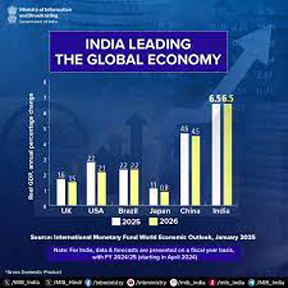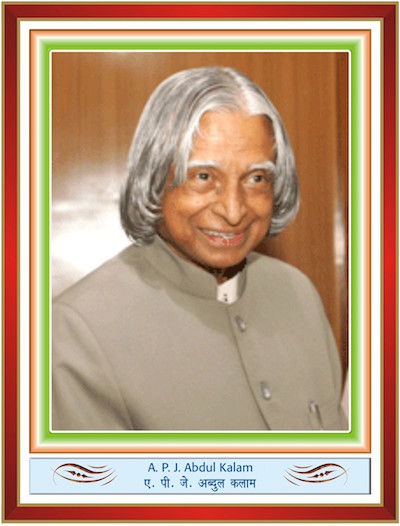

Since seizing real power in 2001 by ousting Keshubhai Patel within his own party, the BJP, Narendra Modi has governed through a calculated mix of deception—relying on fiction, half-truths, strategic omissions, and outright lies to manipulate public perception and evade accountability. This pattern of governance persisted during his tenure as Chief Minister of Gujarat (2001–2014) and has continued unabated since he became Prime Minister in 2014. Modi consistently avoids addressing India’s most pressing challenges—such as the Human Development Index, poverty, hunger and malnutrition, unemployment, rising inequality, corruption, governance failures, political conduct, and public accountability. For him, it is as if these issues simply do not exist.
Modi rose to power by exploiting the aftermath of the 2002 Godhra riots, backed by his robber baron allies—most notably Adani—fueling his ambition to crown himself as the Hindu King of a Hindu Rashtra. Since becoming Prime Minister, he has increasingly acted like a feudal monarch, working to reshape India into a Hindu-first nation where minorities are systematically denied equal rights. From 2015 to 2025, Modi has seized every terror attack—Udhampur, Bijbehara, Baramulla, Pulwama, Reasi, RS Pura, and most recently the April 2025 Pahalgam massacre, where 26 civilians were gunned down—as a political opportunity. Each tragedy became a rallying cry for votes, with Modi portraying himself as the sole protector of India and turning national security crises into campaign slogans. Most troubling is that every military response by Indian armed forces against Pakistan for its role in sponsoring terrorism has been politicized and repackaged as Modi’s personal triumph, allowing him to claim credit for the sacrifices and successes of the armed forces.
Steve Forbes, editor-in-chief of Forbes magazine, sharply criticized Modi’s 2016 demonetization policy—calling it “immoral” and “a massive theft of people’s property without due process,” especially targeting the poor and middle class. He argued it caused immense harm to India’s economy, particularly for the most vulnerable and for small businesses, while failing to curb corruption or black money.
Now, Modi is selling the illusion of prosperity to India’s deprived masses by touting rising GDP figures and selectively quoting institutions like the IMF. What he deliberately omits is that this so-called growth has done little to improve the lives of the millions still surviving on free rations. For them, the benefits of GDP expansion remain a distant mirage. Modi offers no roadmap to transform India into a nation like Japan—where economic growth is coupled with strong governance, universal healthcare, robust social safety nets, and respect for pluralism. Instead, he markets statistics while ignoring the real human costs of inequality, joblessness, and the erosion of democratic institutions.
Here is an analysis of India vs Japan.
India vs. 🇯🇵 Japan: A Comparative Socioeconomic & Governance Analysis
1.Human Development Index (HDI)
- India: 0.633 (Rank: 134/193) – Medium human development
- Japan: 0.925 (Rank: 19/193) – Very high human development
Japan’s HDI reflects better life expectancy, education, and income levels.
- Poverty
- India:
- ~12.9% live in multidimensional poverty (~180 million people)
- ~3% live in extreme poverty (<$2.15/day)
- Japan:
- ~15% live in relative poverty (low income by Japanese standards)
- No extreme poverty by global measures
India battles absolute deprivation; Japan manages income disparity within a developed framework.
- Government Food Assistance
- India:
- Over 800 million people (55% of the population) depend on rationed food under the Public Distribution System (PDS) and NFSA.
- Japan:
- Only ~2 million (~1.5% of population) receive public welfare or food assistance under the Seikatsu Hogo system
India’s program addresses mass hunger; Japan’s is a safety net for isolated individuals.
- Hunger and Malnutrition
- India:
- 224 million people undernourished (Global Hunger Index Rank: 111/125)
- High child stunting and wasting rates
- Japan:
- Negligible hunger; among top 20 in Global Hunger Index
India faces systemic food insecurity; Japan ensures near-universal food sufficiency.
- Unemployment
- India:
- ~33–35 million unemployed (~8%); youth unemployment >20%
- Over 90% of workforce is informal
- Japan:
- ~1.8 million unemployed (~2.6%)
- Formal employment, with labor shortages due to aging population
India’s job market suffers from scale and informality; Japan has fewer workers than jobs.
- Political Behavior & Public Accountability
India:
- Politicians often act like feudal lords:
- Dynastic politics, VIP culture (red beacons, entourages)
- Abuse of law enforcement (Police, ED, Customs, Courts), weak ethics enforcement
- Low resignation rates even after serious allegations
- Public servants often act under political pressure
Japan:
- Politicians and bureaucrats are seen as public servants:
- Ministers resign quickly over even minor scandals
- Transparent governance, low tolerance for misconduct
- Public officials regularly use public transport
India’s political culture mirrors colonial hierarchy; Japan’s is rooted in civic duty.
- Healthcare Spending (% of GDP)
- India: ~2.1% (public ~1.3%) – Low per capita availability
- Japan: ~10.9% – Universal healthcare access
India’s system is overburdened; Japan’s is among the world’s best.
- Education Spending (% of GDP)
- India: ~3.0% – Access improving, quality uneven
- Japan: ~3.5% – High literacy and learning outcomes
Japan emphasizes quality and equity; India struggles with reach and standard.
- Child Care & Development
- India:
- Public childcare (Anganwadis) often underfunded
- High malnutrition and stunting
- Japan:
- Strong early childhood system
- Generous parental leave and subsidies
India fights foundational gaps; Japan supports structured childhood development.
- Rural Development
- India:
- ~65% population rural, suffering from poor infrastructure and employment
- Japan:
- Rural depopulation, but high-quality infrastructure and support programs
India’s rural areas are underdeveloped; Japan maintains service equity despite demographic decline.
- Corruption & Governance
- India: CPI score: 39/100 (Rank: 93) – widespread bribery, political interference
- Japan: CPI score: 73/100 (Rank: 16) – low-level corruption, strong institutions
India grapples with systemic corruption; Japan maintains high administrative integrity.4
- Per Capita Income & Living Standards
- India: ~$2,700 USD
- Japan: ~$42,000 USD
Japan enjoys one of the highest standards of living; India has a growing but unequal economy.
Summary Table
| Indicator | India | Japan |
| HDI | 0.633 (Rank 134) | 0.925 (Rank 19) |
| Poverty Rate | 12.9% (multi), 3% (extreme) | 15% (relative) |
| Food Assistance | 800 million (55% of population) | ~2 million (1.5% of population) |
| Hunger | 224 million undernourished | Negligible |
| Unemployment | ~8% (33–35 million) | ~2.6% (1.8 million) |
| Healthcare Spending (% GDP) | ~2.1% | ~10.9% |
| Education Spending (% GDP) | ~3.0% | ~3.5% |
| Corruption Index (CPI) | 39/100 (Rank 93) | 73/100 (Rank 16) |
| Per Capita Income | ~$2,700 USD | ~$42,000 USD |
| Political Behavior | Feudal, dynastic, VIP culture | Humble, accountable, resign on scandal |
| Rural Development | Underdeveloped, poor infrastructure | Modernized, subsidized, aging |
| Child Care & Early Education | Underfunded, malnutrition persists | High-quality, well-funded, parental support |
Before anyone questions the writer’s integrity by arguing that comparing India to Japan is unfair due to population differences, here is a summary comparison between India and China—two nations with comparable populations (~1.4 billion each). This side-by-side comparison across key socioeconomic, governance, and human development indicators addresses and debunks the common excuse propagated by blind religious loyalists of India’s current religious fanatic leadership—that Japan’s success is solely due to its smaller population. India’s lag is not about size, but about vision, leadership, and priorities.
India vs China: Summary Comparison (2024 Data)
| Indicator | India | China |
| Population | ~1.43 billion | ~1.41 billion |
| Human Development Index (HDI) | 0.633 (Rank 134) | 0.788 (Rank 75) |
| Per Capita Income (USD) | ~$2,700 | ~$13,000 |
| Multidimensional Poverty Rate | ~12.9% | <1% |
| Extreme Poverty (<$2.15/day) | ~3% | <0.1% |
| People on Govt Food Assistance | ~800 million (NFSA) | Targeted rural support programs (~300 million benefited historically) |
| Hunger & Malnutrition | ~224 million undernourished (GHI Rank: 111/125) | <5% child malnutrition; GHI rank significantly higher |
| Unemployment Rate | ~8% overall; ~25% youth unemployment | ~5.2% (official); lower youth unemployment |
| Healthcare Spending (% of GDP) | ~2.1% | ~5.4% |
| Education Spending (% of GDP) | ~3.0% | ~4.0% |
| Infant Mortality (per 1,000 live births) | ~26 | ~5 |
| Literacy Rate (15+ age) | ~77% | ~97% |
| Corruption Perception Index (CPI) | 39/100 (Rank 93) | 42/100 (Rank 76) |
| Infrastructure Quality | Patchy, rural-urban divide | High-quality nationwide infrastructure |
| Urbanization Rate | ~36% | ~65% |
| Childcare & Early Ed Services | Underfunded (Anganwadi model) | Universal pre-school, heavily state-funded |
| Political System | Electoral democracy with weakening institutions | One-party authoritarian regime with strong state control |
| Governance Efficiency | Highly bureaucratic, slow service delivery | Highly centralized, efficient implementation capacity |
| State Capacity | Often captured by elites & feudal politicians | Strong, technocratic, outcome-driven |
Key Insights:
- Poverty & Hunger: China has virtually eliminated extreme poverty, while India still struggles with hundreds of millions in deprivation.
- Income & Development: China’s per capita income is nearly 5x India’s, with significantly better human development outcomes.
- Governance: While China’s system lacks democratic freedoms, its state capacity and delivery mechanisms outperform India’s politically feudal and fragmented administration.
- Population Argument: China shows that population is not an excuse. With nearly the same population as India, it has lifted over 800 million people out of poverty in four decades, invested in massive infrastructure, and maintains basic service delivery at a far higher level.
Bottom Line: Time to Reach Japan’s Success
| Country | Time to Match Japan’s Per Capita Income | Time to Match HDI (0.9+) | Time to Match Governance/Service Delivery |
| India | 35–50 years (by 2060–2075) | 30–40 years | 40–50 years (or uncertain) |
| China | 15–20 years (by 2040–2045) | 15–20 years | Already close in-service delivery |
Summary Table: Time to Catch Up (India to China 2024)
| Area | Projected Years Needed | Target Year |
| Per Capita Income | 25–30 years | 2049–2054 |
| Human Development Index | 15–20 years | 2040–2045 |
| Poverty Elimination | 20–25 years | 2045–2050 |
| Infrastructure & Urbanization | 25–30 years | 2050–2055 |
| Governance & Service Delivery | 30–35 years | 2055–2060 |
Final Thought:
India is 25–35 years behind China in most core development indicators. Closing this gap is possible, but it demands:
- Sustained economic growth
- Investment in human capital
- Strong institutions
- A break from patronage politics and state capture
Otherwise, the gap may persist or widen, especially as China advances toward high-income status and India risks stagnating in lower-middle income.
Conclusion
Japan exemplifies a mature, service-oriented, accountable welfare state. India, by contrast, is a rising feudal democracy heading towards elected autocracy promoting majoritarian religious fanatism, grappling with poverty, political feudalism, no accountability for those in power and state created robber barons and resource constraints. While India’s sheer scale poses challenges, Japan’s model offers lessons in integrity, governance, and inclusive public policy.Top of Form
Japan stands as a model of a mature, service-oriented, and accountable welfare state—rooted in integrity, civic discipline, and inclusive public policy. In stark contrast, India today is a rising feudal democracy veering toward an elected autocracy, where majoritarian religious fanaticism is normalized, political feudalism is entrenched, and accountability for those in power is virtually nonexistent. The state has enabled the rise of robber barons while failing to address systemic poverty and resource inequity. While India’s vast scale presents undeniable challenges, it is Japan’s model that offers vital lessons in good governance, institutional ethics, and equitable development.
(Compiled by Dave Makkar from diverse sources on the Internet. Dave Makkar is a social activist and author.)




Be the first to comment